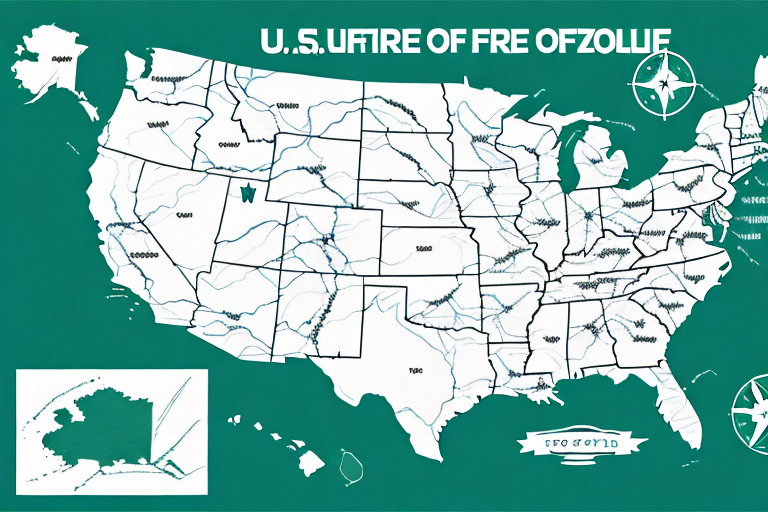Understanding UPS Shipping Rates: A Comprehensive Guide
If you're a business owner or frequently ship items, understanding UPS shipping rates is essential to save money and avoid unexpected costs. In this guide, we'll delve into everything you need to know about UPS shipping rates, including the different shipping services available, how to calculate rates, factors affecting costs, and strategies to optimize your shipping expenses.
The Different Types of UPS Shipping Services
Domestic Shipping Services
- UPS Ground: The most affordable and popular UPS shipping service for non-urgent, domestic deliveries. Typically offers delivery within 1-5 business days, depending on the destination.
- UPS Next Day Air: A premium service guaranteeing next business day delivery for domestic shipments.
- UPS 2nd Day Air: Guarantees delivery within two business days for domestic shipments.
- UPS 3 Day Select: Ensures delivery within three business days for domestic shipments.
International Shipping Services
- UPS Worldwide Express: Offers expedited delivery to over 220 countries and territories, typically within 1-3 business days depending on the destination.
- UPS Worldwide Saver: Provides delivery by the end of the next business day to major destinations worldwide.
Specialized and Value-Added Services
- UPS My Choice: Allows customers to customize delivery preferences, receive alerts, and manage package deliveries more effectively.
- UPS Express Saver: Offers international delivery within 1-3 business days with extended tracking and delivery options.
- Additional Services: Include insurance, package tracking, delivery confirmation, and signature required options to enhance shipment security and reliability.
Calculating UPS Shipping Rates
UPS shipping rates are determined based on several factors, including the chosen shipping service, package weight and dimensions, distance, and destination. Here's how to calculate your UPS shipping rates:
- Visit the UPS Shipping Calculator: Go to the UPS Shipping Rates Calculator.
- Enter Shipment Details: Input the origin and destination addresses, package weight, dimensions, and select the desired shipping service.
- Review the Estimate: The calculator will provide an estimated shipping cost, transit time, and delivery date.
For businesses, UPS offers discounted rates through the UPS Business Shipping Solutions, which can further reduce costs based on shipping volume.
Factors Affecting UPS Shipping Rates
Package Weight and Size
UPS uses both the weight and dimensions of a package to calculate shipping rates. Heavier and larger packages generally incur higher shipping costs due to the increased resources required for transportation.
Shipping Service Selection
The choice of shipping service significantly impacts the rate. Faster delivery options like UPS Next Day Air are more expensive than standard services like UPS Ground.
Destination and Distance
The distance between the origin and destination affects the shipping rate. Longer distances typically result in higher costs. Additionally, international shipments to remote or less accessible locations may incur additional fees.
Additional Services
Opting for value-added services such as insurance, signature confirmation, or special handling can increase the overall shipping cost but provide enhanced security and peace of mind.
Seasonal Demand
During peak seasons like holidays, shipping rates may rise due to increased demand and limited resources. Planning and scheduling shipments in advance can help mitigate these cost fluctuations.
Strategies to Optimize UPS Shipping Costs
Use Smaller Packaging
Reducing package size and weight by using appropriately sized boxes and packing materials can lead to significant cost savings.
Leverage UPS Discounts
Frequent shippers can benefit from negotiated rates or discounts through the UPS Business Shipping Programs.
Compare Shipping Carriers
Comparing rates with other carriers like FedEx and the USPS can help identify the most cost-effective solution for your shipping needs.
Utilize UPS Online Tools
Tools such as the UPS Shipping Calculator and UPS Tracker assist in making informed decisions about packaging and shipping options.
Schedule Smart Pickups
Using UPS's Smart Pickup service can eliminate additional fees for missed pickups and streamline your shipping process.
Comparing UPS with Other Shipping Carriers
UPS vs. FedEx
Both UPS and FedEx offer a wide range of shipping services with comparable pricing structures. While UPS is renowned for its ground shipping efficiency, FedEx often excels in air delivery services. Evaluate your specific shipping needs to choose the best carrier.
UPS vs. USPS
The United States Postal Service (USPS) typically offers more economical rates for lightweight packages and residential deliveries. However, USPS services may not provide the same level of tracking and reliability as UPS for heavier or high-value shipments.
Pros and Cons of UPS Ground vs. Air Services
- UPS Ground: More affordable and suitable for non-urgent shipments but has longer delivery times.
- UPS Air Services: Faster delivery with options like Next Day Air and 2nd Day Air but at a higher cost.
Ensuring Safe and Efficient UPS Shipping
Proper Packaging Techniques
Proper packaging is crucial to prevent damage during transit. Follow these steps to package your items securely:
- Choose the Right Box: Select a sturdy box that accommodates the item's size and weight.
- Use Protective Materials: Utilize bubble wrap, foam, or packing peanuts to cushion the item.
- Seal Securely: Use strong packaging tape to seal all openings and reinforce the box.
- Clear Labeling: Ensure the shipping address and tracking information are clearly labeled.
Tracking Shipments and Delivery
Stay informed about your package's status using the UPS Tracking Tool. Input your tracking number on the UPS website or mobile app to view real-time updates, estimated delivery times, and any transit exceptions.
Filing Claims for Lost or Damaged Packages
If your package is lost or arrives damaged, you can file a claim with UPS for compensation:
- Log In to Your UPS Account: Visit the UPS Claims Center and sign in.
- Provide Necessary Information: Include proof of value, description of the contents, and evidence of damage if applicable.
- Submit the Claim: Follow the on-screen instructions to complete and submit your claim.
For more details, refer to UPS's Claims Process Information.
Benefits of Using UPS for Business Shipping
- Extensive Service Range: A wide array of domestic and international shipping options to meet diverse business needs.
- Global Reach: Operations in over 220 countries and territories, facilitating international trade.
- Reliable Delivery: Consistent and accurate delivery times with advanced tracking capabilities.
- Advanced Technology: Tools and integrations that streamline shipping processes and enhance efficiency.
- Customized Pricing: Flexible payment options and tailored pricing structures for high-volume shippers.
Leveraging UPS's comprehensive shipping solutions can enhance your business's operational efficiency and customer satisfaction.
Common Mistakes to Avoid When Using UPS for Shipping
- Underestimating Package Weight or Size: Accurately measure and weigh your packages to avoid unexpected shipping costs.
- Poor Packaging: Ensure items are securely packaged to prevent damage during transit.
- Incorrect Service Selection: Choose the appropriate shipping service based on urgency and budget to optimize costs.
- Improper Labeling: Clearly label packages with accurate shipping and return addresses to prevent delivery issues.
- Neglecting Tracking: Always use tracking options to monitor shipments and address any transit issues promptly.
Conclusion
Understanding and effectively managing UPS shipping rates can lead to significant cost savings and enhance your shipping efficiency. Whether you're a small business owner or an individual shipper, leveraging the right services, optimizing package dimensions, and utilizing available discounts are key strategies to minimize expenses. Stay informed about the latest UPS offerings and continuously assess your shipping needs to ensure the most cost-effective and reliable delivery solutions.






















